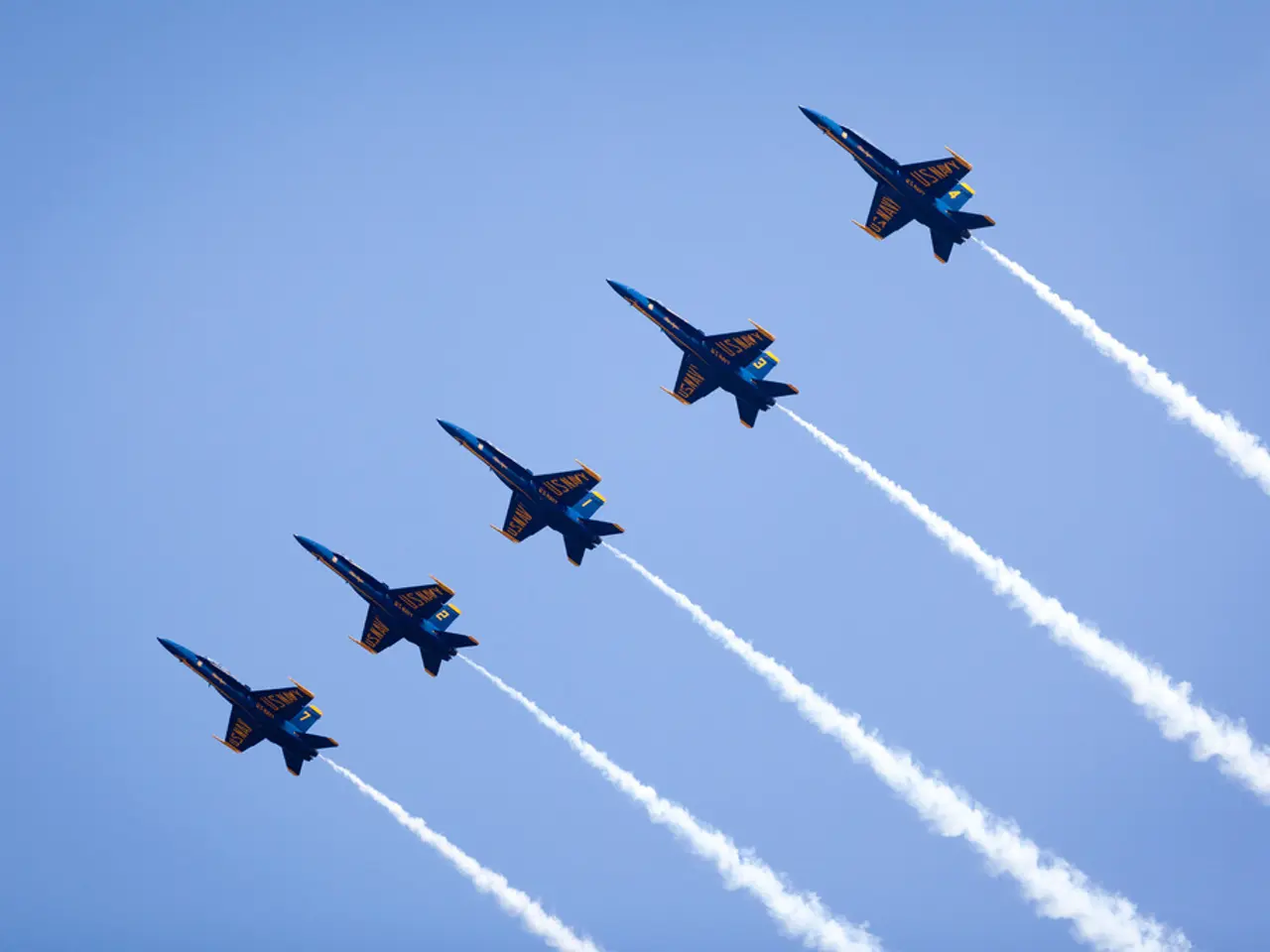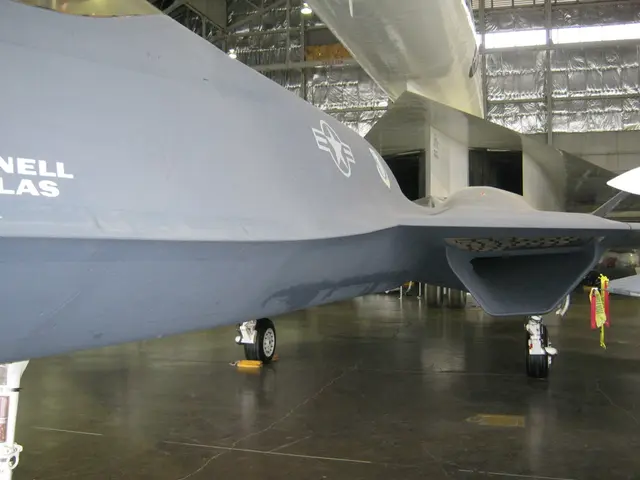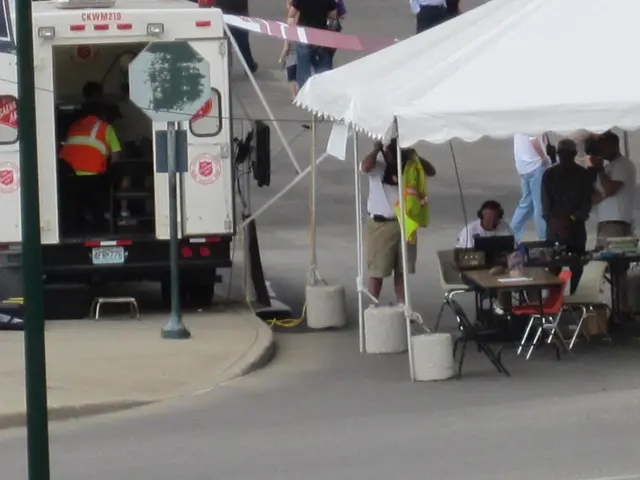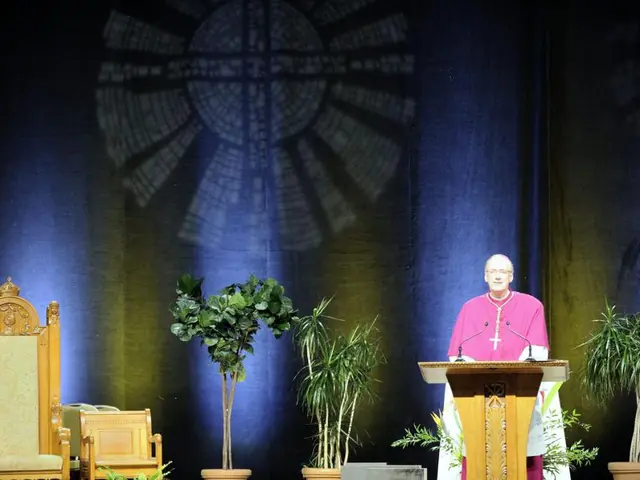Military operations intensify in Guam as B-52 Bomber Task Force commences, boosting Pacific military drills
In a strategic move, the United States Air Force (USAF) has dispatched a Bomber Task Force (BTF) to Guam and Diego Garcia, as part of ongoing exercises in the Indo-Pacific region. This deployment is a key component of the Resolute Force Pacific (REFORPAC) exercise, an annual event designed to simulate theater-wide warfighting capabilities involving multiple allied nations.
The core objectives of this BTF deployment are multifold. First and foremost, it aims to reinforce deterrence against China by demonstrating the U.S.'s strategic bomber presence and capabilities in the region. This move is intended to send a clear message about the U.S.'s commitment to maintaining peace and stability in the Indo-Pacific.
Second, the deployment supports Pacific Air Forces' training efforts alongside allies and partners. The goal is to strengthen joint readiness and interoperability, ensuring that the U.S. and its allies are prepared to respond effectively to any potential threats.
Third, the deployment upholds the rules-based international order in the Indo-Pacific by maintaining a visible, credible military presence. This presence serves as a deterrent to any actions that could undermine regional security and stability.
Fourth, the deployment is also preparing for potential large-scale conflict scenarios with China. REFORPAC is designed to simulate such scenarios, involving multiple allied nations including Japan, South Korea, Australia, Canada, New Zealand, and the UK.
The BTF includes multiple B-52H Stratofortress bombers from Minot Air Force Base, North Dakota, currently operating as the 23rd Expeditionary Bomb Squadron assigned to the 5th Bomb Wing. Approximately 300 aircraft are involved in the REFORPAC exercise. According to open-source flight tracking data, at least two B-52s have been deployed to Guam, while four B-52s are stationed on Diego Garcia in the Indian Ocean.
The B-52s on Diego Garcia have been stationed there since May, taking over for B-2 Spirits that conducted airstrikes in Yemen until the U.S. reached a ceasefire with the Houthi rebels. The B-52s on Guam are part of the same BTF deployment, enhancing the strategic unpredictability of bomber basing by shifting from a continuous presence on Guam (maintained for 16 years until 2020) to regular, rotational deployments originating from the U.S.
The B-52s also conduct joint training missions accompanied by allied fighter escorts, such as those from Japan and South Korea. These missions foster trust, cooperation, and collective will among regional partners, further strengthening the U.S.'s defense posture in the Indo-Pacific.
In summary, the purpose and scope of the B-52 task force deployment are to bolster strategic deterrence against China's increasing military capabilities, enhance allied joint readiness through REFORPAC exercises, and sustain U.S. power projection in the Indo-Pacific as a key element of broader U.S. defense posture in the region. The specific missions of the B-52s during their deployment have not been previewed, adding an element of strategic unpredictability to the U.S.'s military posture in the region.
- The United States Air Force (USAF) has dispatched a Bomber Task Force (BTF) to Guam and Diego Garcia, which includes multiple B-52H Stratofortress bombers, as part of the aerospace industry's involvement in the Indo-Pacific region.
- The Pentagon, with the support of the military finance, has deployed these aircraft for the Resolute Force Pacific (REFORPAC) exercise, aiming to reinforce deterrence against China and uphold the rules-based international order in the region.
- The aircraft's missions during deployment have not been previewed, adding an element of strategic unpredictability to the U.S.'s military posture in the region, particularly in relation to potential large-scale conflict scenarios with China.
- The deployment also serves to strengthen joint readiness and interoperability with allies such as Japan and South Korea, further emphasizing the importance of cooperation within the aerospace industry in ensuring peace and stability in the Indo-Pacific.








